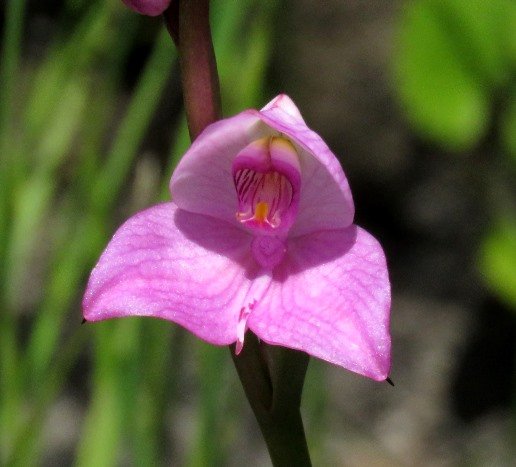Disa racemosa flower

Author: Ivan Lätti
Photographer: Louis Jordaan
Up to twelve Disa racemosa flowers grow spaced in an erect spike. The floral bracts are about as long as the ovaries, more or less enclosing them.
The flowers are pink in several shades with darker to purplish veins on the bigger tepals. The median sepal is erect and dish-shaped, an obsolete, laterally flattened spur protruding from its back. This hooded sepal is 2 cm long or slightly longer and nearly as broad. The lateral sepals spread, broadly elliptic to oblong and about 2 cm long. The smaller lateral petals and lip are white to yellow with purple, parallel stripes on the petals. Flower diameter is about 4 cm.
Carpenter bees pollinate the flowers that produce no nectar.
Flowering happens from before midspring to after midsummer, best after fire and notably less after more than two years without fire.
The specific epithet, racemosa, is derived from the Latin word, racemus, meaning a bunch of grapes but in botanical terminology the word has assumed the meaning of a simple, spike-like inflorescence. These flowers are not stalked or pedicelled as those in a raceme usually are. Unstalked or sessile flowers in such an inflorescence structure is usually called a spike (Liltved and Johnson, 2012; Vlok and Schutte-Vlok, 2015; Manning, 2007; Gledhill, 1981; iNaturalist).

